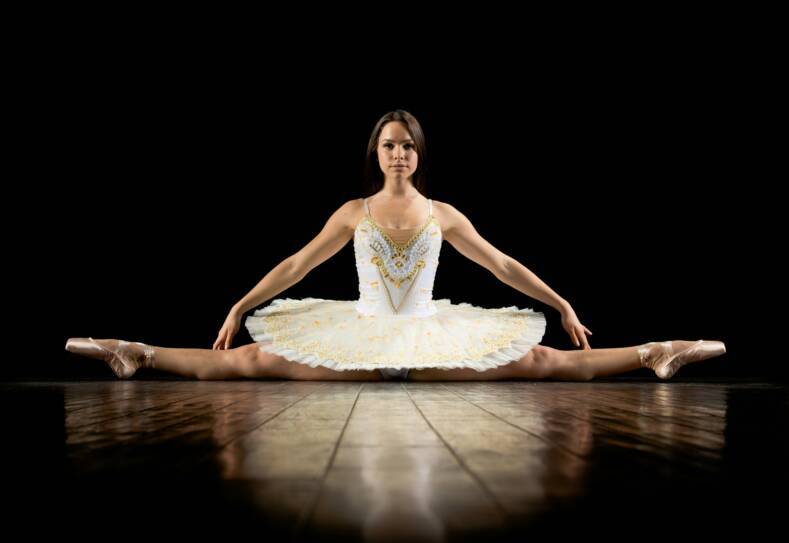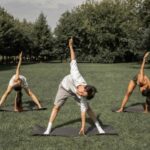Leg flexibility is a crucial component of a well-rounded exercise routine, contributing to better performance, reduced risk of injury, and enhanced ability to carry out daily activities with ease. Regular stretching of the leg muscles can lead to significant improvements in range of motion, which in turn can have a positive impact on overall mobility. It is recommended that individuals incorporate leg stretches into their workouts, not only as a cooldown but also as a separate flexibility session. Healthcare professionals often advise patients on the benefits of leg stretches, underlining their role in maintaining muscular health and preventing stiffness.
Implementing a variety of leg stretches can target different muscle groups such as the hamstrings, quadriceps, calves, and hip flexors, each of which supports various functions of the lower body. Stretching should be performed with proper technique, paying close attention to form to maximize the stretch’s effectiveness and minimize the risk of strain. Static stretches, where a pose is held for a certain duration, are particularly beneficial post-exercise, while dynamic stretches are more suited to warming up the muscles before engaging in physical activity.
In a routine aimed at cultivating leg flexibility, consistency is key. Just as with any aspect of fitness, gradual progression and regular practice are foundational principles for achieving lasting results. Individuals should aim to integrate leg stretching into their weekly schedule, ensuring that each session contributes to enhancing their flexibility and supporting their muscular health.
Understanding Flexibility and Stretching
To improve leg flexibility, one must engage in consistent stretching that targets the muscles and enhances the range of motion.
Benefits of Stretching for Leg Flexibility
Stretching is integral to maintaining and improving flexibility in the legs. It offers several benefits:
- Reduces muscle stiffness: Regular stretching helps to reduce muscle stiffness, which can decrease the likelihood of injuries.
- Enhances mobility: With better leg flexibility, individuals often experience an increase in mobility, making daily activities easier.
- Alleviates pain: Stretching can alleviate pain associated with tight muscles, particularly in the lower back, hips, and legs.
- Prepares for exercise: Proper warm-up, including stretching, readies the muscles for the strain of exercise and can improve overall performance.
Types of Stretching: Dynamic vs. Static
Two primary types of stretching are utilized for improving leg flexibility:
- Dynamic Stretching: This involves active movements where muscles are stretched but not held in the end position. These stretches are ideal for warming up the body before exercising.Examples:
- Leg swings
- Walking lunges
- Static Stretching: This type consists of stretches where a position is held for a period, usually 15-30 seconds, and is beneficial after a workout to cool down.Techniques:
- Keeping the back straight, one can lean into a lunge to stretch the calf muscles.
- Sitting down and reaching for the toes stretches the hamstring while maintaining a flat back encourages proper alignment and a deeper stretch.
Preparation for Leg Stretches
Before delving into leg stretching routines, it is vital for individuals to understand the importance of proper preparation. This not only enhances the efficiency of the stretches but also minimizes the risk of injury due to improper form or cold muscles.
Importance of Warm-Up
A proper warm-up is essential because it gradually increases the heart rate and circulation, thereby loosening the joints and increasing blood flow to the muscles. Warm-up exercises, such as brisk walking or light jogging for 5 to 10 minutes, effectively prepare the muscles for the impending stretches and reduce the likelihood of strain or injury. Ensuring that the muscles are warm before stretching allows for a safer and more effective flexibility workout.
Consulting a Doctor or Physical Therapist
For those with pre-existing conditions or a history of leg injuries, consultation with a doctor or a physical therapist is highly recommended before starting any stretching regimen. They can provide tailored advice and may suggest specific stretches that align with the individual’s health needs. Moreover, these professionals can teach the proper form and techniques necessary for safe and beneficial stretching, helping to prevent the risk of further injury or complications.
Essential Stretches for Leg Flexibility
Improving leg flexibility can enhance one’s overall range of motion and reduce the risk of injury. Consistent stretching aids in muscle recovery and can help alleviate tightness in key areas such as the hamstrings, quadriceps, calves, and hip flexors.
Hamstring Stretches
To effectively stretch the hamstrings, one can perform a seated stretch by extending their legs forward while reaching towards their toes, ensuring the back stays straight. Another method is the lying hamstring stretch where an individual lies on their back, raises one leg, and gently pulls it towards their chest with both hands.
- Seated Hamstring Stretch: Sit with legs extended, reach for toes.
- Lying Hamstring Stretch: Lie on back, pull leg to chest.
Quadriceps Stretches
Quadriceps can be stretched through a standing quad stretch by standing on one leg, bending the knee of the other leg, and bringing the heel to the buttock. Stability can be maintained by holding onto a chair or wall.
- Standing Quad Stretch: Stand on one leg, heel to buttock, hold ankle.
Calf Stretches
Enhancing calf flexibility can be achieved with a standing calf stretch which involves standing facing a wall with one foot in front of the other and leaning forward while keeping the back leg straight and the heel on the ground.
- Standing Calf Stretch: Keep back leg straight, lean forward, heel down.
Hip Flexor and Glute Stretches
Stretches that target the hip flexors and glutes are crucial for lower body flexibility. A commonly used stretch is the lunge stretch which opens up the hip flexors. For the glutes, one can perform a seated figure-four stretch by sitting with one ankle across the knee of the other leg and leaning forward to deepen the stretch.
- Lunge Stretch: Kneel into a lunge for hip flexors.
- Seated Figure-Four Stretch: Sit, cross ankle over knee, lean forward for glutes.
Yoga-Based Stretches for Enhanced Leg Flexibility
Yoga offers a variety of poses specifically designed to increase leg flexibility and strengthen lower body muscles. Among these, Pigeon Pose and Downward Dog are particularly effective for targeting the hamstrings and improving overall lower body flexibility.
Pigeon Pose
Pigeon Pose (Eka Pada Rajakapotasana) is excellent for opening the hip flexors and stretching the hamstrings.
Steps:
- Start in a kneeling position.
- Bring your right knee forward and place it behind your right wrist.
- Extend your left leg straight behind you.
- Square your hips to the front of the mat.
It’s important not to force the body into this position; using a prop such as a cushion for support under the right hip can be helpful for maintaining alignment.
Downward Dog
Downward Dog (Adho Mukha Svanasana) targets the calves, hamstrings, and the spinal muscles.
Steps:
- Begin on hands and knees.
- Lift the hips high, straightening the legs to form an inverted V shape.
- Press the heels toward the ground.
To enhance the stretch in the hamstrings, one can alternate bending the knees, easing the legs into a deeper stretch incrementally.
Incorporating Stretches into Your Fitness Routine
Incorporating flexibility training into one’s fitness routine is essential for building strength and aiding recovery. Stretching can enhance an individual’s overall exercise routine through improved mobility and reduced risk of injury.
Creating a Stretching Schedule
Consistency is key when integrating leg stretches into a fitness routine. Individuals should aim to allocate specific times for stretching, ensuring it becomes a regular part of their exercise regimen. An ideal approach involves:
- Dynamic stretches as part of a warm-up to prepare the muscles before strength training.
- Static stretches post-workout, when muscles are warm and pliable, to improve flexibility and aid in recovery.
A balanced stretching schedule could look like this:
| Day | Pre-Workout | Post-Workout |
|---|---|---|
| Monday | Leg swings, walking lunges | Hamstring stretch, quad stretch |
| Wednesday | Inchworms, lateral lunges | Calf stretch, hip flexor stretch |
| Friday | High knees, butt kicks | Glute stretch, adductor stretch |
Combining Strength Training and Stretching
Incorporating active stretches during strength training can enhance overall fitness by increasing strength and flexibility simultaneously. This approach helps maintain a full range of motion and can prevent the shortening of muscles that often accompanies strength training. Strategies include:
- Integrating active stretches between sets, such as leg lifts or yoga poses, to keep muscles engaged.
- Following strength exercises with stretches targeting the same muscle groups to promote muscle recovery and prevent tightness.
Addressing Leg Pain and Stiffness
Leg pain and stiffness can often be attributed to static lifestyles or repetitive motions. Incorporating specific stretches helps alleviate discomfort, targeting areas often affected such as the lower back and hamstrings.
Stretches for People with Desk Jobs
Seated Hamstring Stretch:
- Sit at the edge of a chair.
- Extend one leg forward.
- Flex the foot and lean slightly into the stretch.
- Hold for 30 seconds and switch legs.
Chair Pigeon Pose:
- While seated, place one ankle on the opposite knee.
- Gently lean forward, keeping the back straight.
- Hold for 20-30 seconds to relieve hip and lower back tension.
- Repeat on the other side.
These stretches aim to reduce tightness and prevent back pain, common in individuals who sit for prolonged periods.
Stretches for Runners
Standing Calf Stretch:
- Face a wall and extend one foot back.
- Keep the heel down and lean forward until a stretch is felt in the calf.
- Hold for 30 seconds, then switch legs.
Dynamic Leg Swings:
- Hold onto a stable surface.
- Swing one leg forward and back, gradually increasing the range of motion.
- Perform 20 swings and then switch to the other leg.
Runners typically experience tight hamstrings and calf muscles. These stretches help maintain flexibility, reduce stiffness, and improve overall running performance.
Preventing Injuries Through Leg Stretches
Leg stretches, when performed correctly, are a vital component in preventing injuries such as muscle strain and damage to joints. They are particularly essential for the hips, back, neck, and shoulders, which benefit from improved flexibility and strength. Sufficient attention to stretching these major muscle groups promotes better posture and overall joint health.
Proper Techniques for Safe Stretching
When engaging in leg stretches, one must always emphasize proper techniques to safeguard against potential injury. Individuals should:
- Warm up before stretching to increase muscle elasticity.
- Perform stretches with controlled movements, avoiding any bouncing or jerking.
- Hold the stretch for at least 30 seconds to allow the muscle fibers to relax and extend.
- Strive for a feeling of tension, not pain; discomfort indicates a stretch should be eased to prevent muscle overextension.
It is crucial to maintain good posture while stretching. This helps in aligning the body correctly, which, in turn, ensures that the right muscles are being targeted without putting undue pressure on the joints.
Stretching and Joint Health
Regular stretching contributes significantly to joint health by:
- Increasing the range of motion of hips and shoulders, which can diminish stiffness and joint pain.
- Improving circulation to the muscles and joints, aiding in recovery and injury prevention.
- Contributing to better posture, which reduces strain on joints, including those of the back and neck.
Engaging the major muscle groups through stretches such as the hip flexor stretch, calf stretch, and hamstring stretch can prevent the likelihood of injury by preparing these muscles and their associated joints for the demands of physical activity.
By incorporating these practices into a regular fitness routine, individuals can create a robust foundation that supports the longevity of their joints and overall musculoskeletal health.








